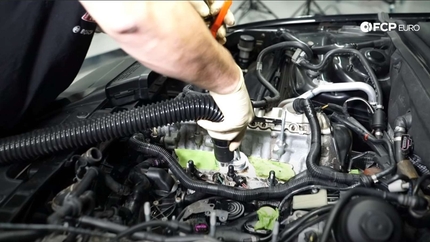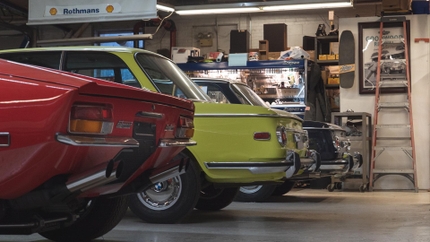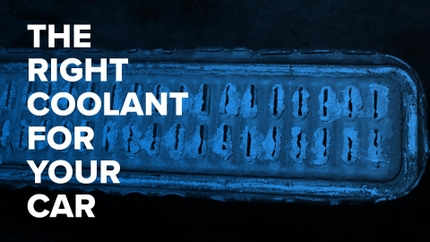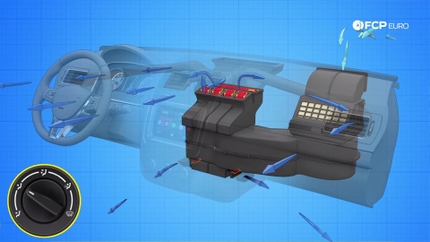- 04/09/2016
- 2 Min Read
- By: Nicolas Siemsen
Why Mercedes DIY Diagnosis Can Save Serious Cash
Since you are here reading this blog I imagine that you have a sense that doing your own car repairs can save you money, but what if I told you that doing some DIY diagnosis before jumping in and replacing parts can pay off just as much?
I do not know many DIY’ers born with an innate mechanical knowledge so most of us have found ourselves in a situation where something on our car isn’t working right and we don’t have a clue why. It can be a rather helpless feeling!
If you’re planning to DIY you’re left with no other option but to throw parts at the problem until it resolves itself, a potentially expensive and frustrating proposition. If you are resigned to taking your car to a mechanic you are at the mercy of someone whose primary motivation, as a business, is usually to sell you top dollar “Gen-u-ine” parts and pad their hourly tab. I know I’ve been there before. Maybe out of a desire to never have that helpless feeling again, I set out to learn some basic theories and techniques for DIY diagnosis and have found it to be just as important as having an overflowing tool chest when it comes to doing your own car repairs.
I will share a few real life examples, from my own experiences. I will cover what the symptom of the problem was, touch on what assumptions were made either by a mechanic or the DIY’er, and finally I will share with you what the real problem was and how finding the root cause through proper diagnosis saved some big bucks! After that, I will suggest how you can learn to diagnose your own car troubles.
Example #1:
Stiff brake pedal on a 1979 300D I had just purchased a 1979 Mercedes 300D. The then owner had recently taken it to a local European shop for a once-over. The quote he got was what drove him to sell his car.
The symptom: the brake pedal was rather stiff, making it difficult to apply the brakes. Mechanic’s assumptions: because the mechanic was unfamiliar with the vacuum systems on these older Mercedes, he jumped to some conclusions.
Mercedes diesels have an engine driven vacuum pump that provides needed vacuum for a variety of systems, including the vacuum assisted brake booster. The mechanic provided a quote stating that either the vacuum pump (a part that is no longer available for these early non-turbo diesel W123’s but at the time was a $300+ dollar part) or the brake booster (another nearly $300 part) were faulty and needed to be replaced. 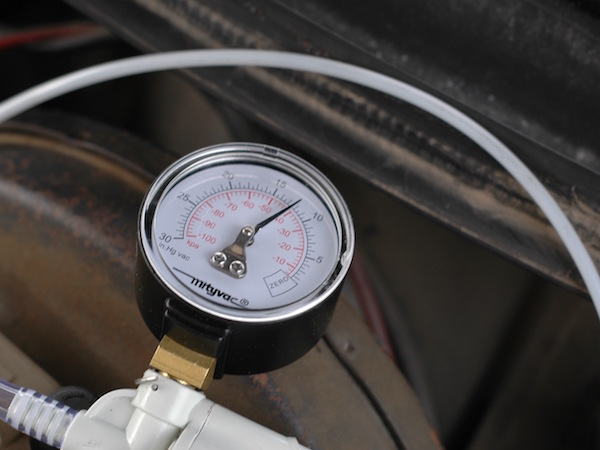
The real story: as I mentioned a moment ago, the vacuum pumps on these old diesels provide vacuum to a variety of systems, just one being the brakes. Other related systems include vacuum operated door locks, and vacuum operated climate control vent flaps. I got myself a vacuum gauge and started tracking down leaks in the various systems.
Mercedes Vacuum Bleed & Test Kit - CTA 7000
What do you know? I found several leaky actuators in the door lock system (the leaky trunk lock actuator is shown below). This was letting air bleed in where instead a vacuum should be throughout the system. This was reducing the ability of the brake booster to function properly. After fixing these leaks the brakes returned to normal operation!
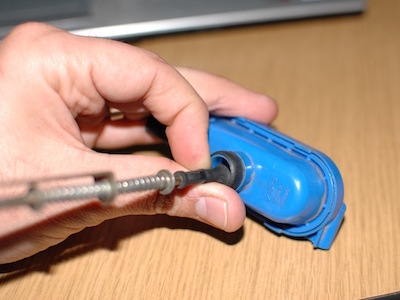
The payoff: by diagnosing this myself and fixing the vacuum leaks, I easily saved anywhere from $600 to $1,000. My reasoning: had I simply followed the advice of the mechanic, who obviously hadn't done much diagnosis himself, I would have dropped $600 on parts and not even fixed the problem! Had the mechanic done the work it would have ended at the same point, without a fix, but with several hours of labor at $100/hr.
Example #2:
The W123 that wouldn’t stop overheating! I frequent several Mercedes specific forums and a fellow user posted regarding ongoing problems with their car reading hot on the temperature gauge. The symptom: a temperature gauge that consistently read high, near the “red zone”, though the coolant never boiled over and the car ran fine. Owner’s assumptions: by jumping to conclusions the owner/DIY’er went the route of throwing parts at their car. First, they flushed the coolant. Then they replaced the thermostat.
Then they installed a new water pump! They were just about to order a new radiator, as the overheating problem kept occurring. However, they were becoming very frustrated with the amount of work and money they were putting in to their vehicle so they came to the forum asking for help, advice, and maybe some sympathy!
The real story: having dealt with overheating symptoms like this before I suggested that they purchase an inexpensive infrared thermometer, such as this one available on Amazon: Etekcity Lasergrip 1080 Non-contact Digital Laser IR Infrared Thermometer Temperature Gun I then advised that the next time their gauge read high they use the thermometer to take a temperature reading on the cylinder head near the temperature sender. When they did this, guess what they found? It was holding at a perfect 90°C despite their gauge reading over 110°C! In the end, it was determined that an electrical issue, likely a bad ground leading to increased resistance in the circuit, was causing his gauge to misinterpret the signal from the sender.
The payoff: while, unfortunately, this DIY’er had already spent lots of time and a fair bit of money on their car trying to fix this issue at least they didn’t continue to drop big bucks on a new radiator! Now he could instead focus on resolving the real problem. With some examples in hand, you may now wonder how you can get started on learning to diagnose your own car troubles. Your first and best resource will be a blog like this, where you’ll find posts on diagnosing systems just like described above. I know I’ll be writing some soon!
Next, join forums that are specific to your make and model. Read a lot of posts there, ask questions, do searches and you’ll start to pick up some techniques. And finally, you should strongly consider getting your hands on a copy of your car’s factory service manual (FSM). For those of us with older Mercedes, we are pretty fortunate that several of the FSM’s are available online for free at www.startekinfo.com but if you own another type of car you may need to fork over some coin for a manual.
That said, a small investment in such a document can pay huge dividends the first time it saves you from buying and installing parts you don’t need! So next time your car presents you with a problem, remember this post and see what you can do to diagnose it yourself before starting in on the work or taking it to a shop. I think you’ll find, as I have, that it will pay off big time!


